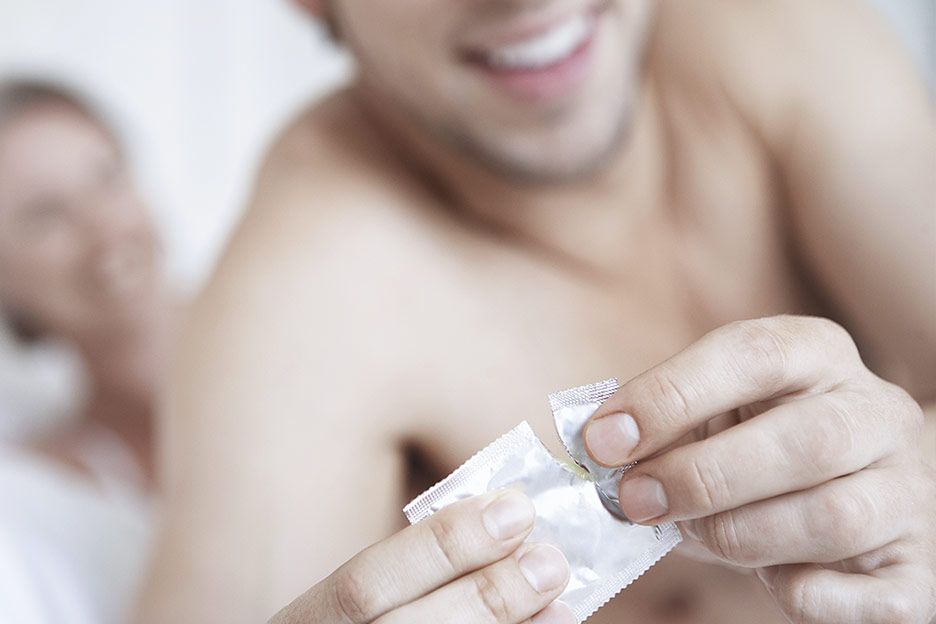Contrary to popular belief, sexually transmitted infections (STIs) are increasing in frequency everywhere in Quebec especially among young people aged 15 to 24. There is also an increasing number of cases in middle-aged adults and among the elderly. Here is an overview of five common STIs which you should be aware of.

Contrary to popular belief, sexually transmitted infections (STIs) are increasing in frequency everywhere in Quebec especially among young people aged 15 to 24. There is also an increasing number of cases in middle-aged adults and among the elderly. Here is an overview of five common STIs which you should be aware of.
1
Chlamydia
In Canada, the majority of people affected are aged 15 to 24, and this disease affects twice as many women as men.
Chlamydia is caused by a bacteria that can affect different parts of the body, including the genitals and the rectum. It is transmitted during an unprotected vaginal, anal or oral sexual relation with an infected person.
In women, chlamydia can cause:
- a burning sensation during urination,
- abnormal vaginal discharge,
- bleeding between periods,
- during or after sexual intercourse,
- Increased pain during intercourse or periods,
- or lower abdominal or back pain.
In men, chlamydia leads to:
- itching on the penis,
- burning sensation or pain during urination,
- discharge from the penis,
- pain or swelling of the testicles.
Nearly half of the men affected do not experience any symptoms.
2
Gonorrhea
Over the past 10 years, the number of declared gonorrhea cases has increased by 200%. This STI is caused by a bacteria and is transmitted during an unprotected vaginal, anal or oral sexual relation with an infected person. An infected mother can also pass on the disease to her child during childbirth.
In women, gonorrhea can cause the following symptoms:
- burning sensation during urination,
- pain or abnormal vaginal bleeding
- and yellowish vaginal discharge.
In men, the following symptoms are possible:
- discharge from the penis,
- burning sensation during urination,
- pain or swelling of the testicles.
That being said, a good number of men and women are asymptomatic.
3
Genital herpes
Genital herpes affects approximately one in every five Canadians, which makes it one of the most widespread STIs in North America. This infection is caused by the herpes simplex (HSV) virus, which exists in two forms: type 1 (HSV1) and type 2 (HSV2). The latter is mostly responsible for cases of genital herpes.
This STI is transmitted through skin-to-skin contact with an infected area, mainly during vaginal, anal or oral sexual relations with an infected person. Genital herpes is characterized by the outbreak of painful lesions generally located in the genital area, around the anus, and sometimes on the thighs or buttocks. These lesions appear in the form of blisters.
Their appearance may be preceded by symptoms such as localized tingling or itching. Many people do not know that they have genital herpes because symptoms may sometimes be nonexistent, mild or may be confused with pimples or other skin irritations.
4
HPV
The Human Papilloma Virus (HPV)
In most cases, the individual’s immune system succeeds in naturally eliminating the infection. In others, however, the infection takes hold and can cause a variety of health problems, including condylomata (small warts).
When HPV causes condylomata, they appear as minuscule growths shaped like cauliflower or venereal warts that are of skin color. They do not normally cause any pain, but they may cause itching.
5
HIV and AIDS
HIV (Human Immunodeficiency Virus) is a virus that infects certain cells of the immune system, the body’s defense system. It is transmitted from one person to another through contact with infected biological fluids such as vaginal secretions, sperm, pre-ejaculatory liquid and blood.
The most common means of HIV transmission are unprotected sexual relations (vaginal, anal and oral) with an infected person, sharing needles and material for drug injection, and the use of non-sterilized needles (tattooing, acupuncture, etc.). A mother can also transmit the disease to her child during pregnancy, childbirth and breastfeeding.
When a person is infected with HIV, we say that this person is HIV seropositive. Once the immune system is weakened, the virus prevents the body from fighting off infections, which causes a range of symptoms. That is when we talk of AIDS, or Acquired Immunodeficiency Syndrome. It takes an average of ten years for an HIV infection to lead to AIDS.
For more information about these STIs, consult the articles on each one of them or consult your pharmacist.

Some tips to reduce your risks of contracting an STI:
- Use a condom during your sexual relations – even during oral sex;
- To prevent transmission from a woman to a man during oral sex, you can cut a condom lengthwise or use a dental dam placed on female genitals. A dental dam is a thin square of latex used to prevent the transmission of an STI during oral sex;
- Limit your number of sexual partners;
- Have an STI blood test done if you have a new sexual partner and get treated if an infection is detected;
- Avoid sexual relations with a visibly infected person.
In any case, don’t hesitate to speak to your pharmacist affiliated to Brunet. He can inform you on safe practices to adopt in order to enjoy a healthy and worry-free sexuality. If you have an STI, he can also inform you on the different treatments that are available.
